What is UI UX Design really about?
What is UI UX Design really about?
What is UI UX Design really about?
Sunny Haladker
Co-founder
Co-founder
5 Min ago
5 Min ago
12 Aug 2024
12 Aug 2024




In the most basic terms, a UI UX (User Interface, User Experience) designer makes digital products ranging from a website, software to apps, and any other products. A UX Designer makes the plan and designs the experience of the product, and a UI Designer visually designs it. Similar to the plan of a house, a UX designer is like the architect who plans the house, and a UI Designer is similar to the interior designer who visually designs it.
UX design is still a relatively new field, with many companies only just waking up to the fact that they need someone on their payroll if they want to succeed in attracting and retaining customers.
Part of the confusion might lie in the name: UX design. For many people, the word “design” is associated with creativity, colors, and graphics, when its true definition lies in functionality, as well as the process behind making products that provide a seamless experience for the people who use them.
UI Designer
A UI Designer is someone responsible for the look and feel of a digital product. They primarily work with graphic design tools, such as Adobe Photoshop, Adobe Illustrator, Sketch, etc which allow you to create vector objects or other UI Design elements.
A UI Designer determines the colors, backgrounds, typography, button sizes, text sizes, and every other visual element of a digital product. They essentially design the entire aesthetics of an app. A UI Designer is also known as a Web Designer.
UI Designer’s job includes the following:
Look and Feel:
Customer Analysis
Design Research
Branding and Graphic
Development
User Guides/Storyline
Responsiveness and Interactivity:
UI Prototyping
Interactivity and Animation
Adaptation to All Device Screen Sizes
Implementation with Developer
UX Designer
A UX Designer is someone responsible for the overall experience while navigating through a digital product. A UX Designer starts by doing the research, wireframing, prototyping, storyboarding, user testing, monitoring how a user uses the system, creating flow charts, outlines.
The designers constantly need to be updated with the latest trends and software to keep digital products up to date. UX designers are generally focused on the development of digital products, but the theory and process can be applied to just about anything:
Strategy and Context:
Competitor Analysis
Customer Analysis
Product Structure/Strategy
Content Development
Wireframing and Prototyping:
Wireframing
Prototyping
Testing/Iteration
Development Planning
Execution and Analytics
Coordination with UI UX Designer(s)
Coordination with Developers
Tracking Goals and Integration
Analysis and Iteration
Something that looks great but is difficult to use is exemplary of great UI and poor UX. While Something very usable that looks terrible is an example of great UX and poor UI.
When you come to think of it, the above layman’s understanding isn’t entirely true from a user’s point of view. If either one of the UI or UX is poor, the user senses an inferior product. This means, both UI and UX need to be more than just great individually. It’s only when they blend seamlessly does either of the two and by extension the product becomes great.
In the most basic terms, a UI UX (User Interface, User Experience) designer makes digital products ranging from a website, software to apps, and any other products. A UX Designer makes the plan and designs the experience of the product, and a UI Designer visually designs it. Similar to the plan of a house, a UX designer is like the architect who plans the house, and a UI Designer is similar to the interior designer who visually designs it.
UX design is still a relatively new field, with many companies only just waking up to the fact that they need someone on their payroll if they want to succeed in attracting and retaining customers.
Part of the confusion might lie in the name: UX design. For many people, the word “design” is associated with creativity, colors, and graphics, when its true definition lies in functionality, as well as the process behind making products that provide a seamless experience for the people who use them.
UI Designer
A UI Designer is someone responsible for the look and feel of a digital product. They primarily work with graphic design tools, such as Adobe Photoshop, Adobe Illustrator, Sketch, etc which allow you to create vector objects or other UI Design elements.
A UI Designer determines the colors, backgrounds, typography, button sizes, text sizes, and every other visual element of a digital product. They essentially design the entire aesthetics of an app. A UI Designer is also known as a Web Designer.
UI Designer’s job includes the following:
Look and Feel:
Customer Analysis
Design Research
Branding and Graphic
Development
User Guides/Storyline
Responsiveness and Interactivity:
UI Prototyping
Interactivity and Animation
Adaptation to All Device Screen Sizes
Implementation with Developer
UX Designer
A UX Designer is someone responsible for the overall experience while navigating through a digital product. A UX Designer starts by doing the research, wireframing, prototyping, storyboarding, user testing, monitoring how a user uses the system, creating flow charts, outlines.
The designers constantly need to be updated with the latest trends and software to keep digital products up to date. UX designers are generally focused on the development of digital products, but the theory and process can be applied to just about anything:
Strategy and Context:
Competitor Analysis
Customer Analysis
Product Structure/Strategy
Content Development
Wireframing and Prototyping:
Wireframing
Prototyping
Testing/Iteration
Development Planning
Execution and Analytics
Coordination with UI UX Designer(s)
Coordination with Developers
Tracking Goals and Integration
Analysis and Iteration
Something that looks great but is difficult to use is exemplary of great UI and poor UX. While Something very usable that looks terrible is an example of great UX and poor UI.
When you come to think of it, the above layman’s understanding isn’t entirely true from a user’s point of view. If either one of the UI or UX is poor, the user senses an inferior product. This means, both UI and UX need to be more than just great individually. It’s only when they blend seamlessly does either of the two and by extension the product becomes great.


More Blogs
More Blogs
More Blogs
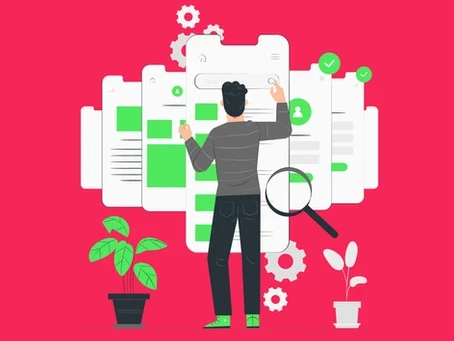
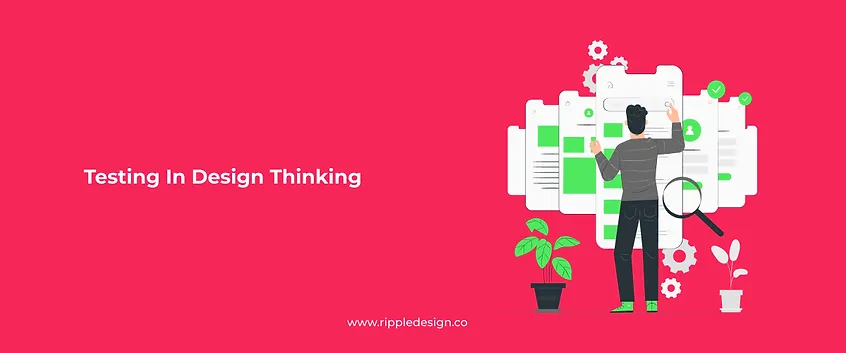
12 Aug 2024
•
5 Min ago
Testing in Design Thinking
The five stages of Design Thinking — Empathize, Define, Ideate, Prototype and Test — are not meant to be sequential steps to be taken as...
Sunny Haladker
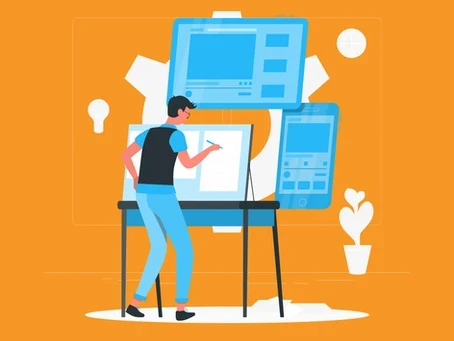

12 Aug 2024
•
5 Min ago
10 types of prototypes
In the prototyping stage of design thinking, we try to explore the problem we have identified and ideated on. We create a sample to test...
Sunny Haladker
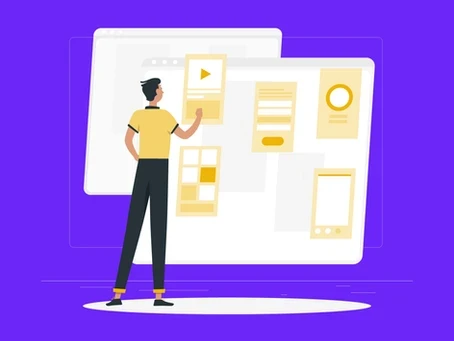
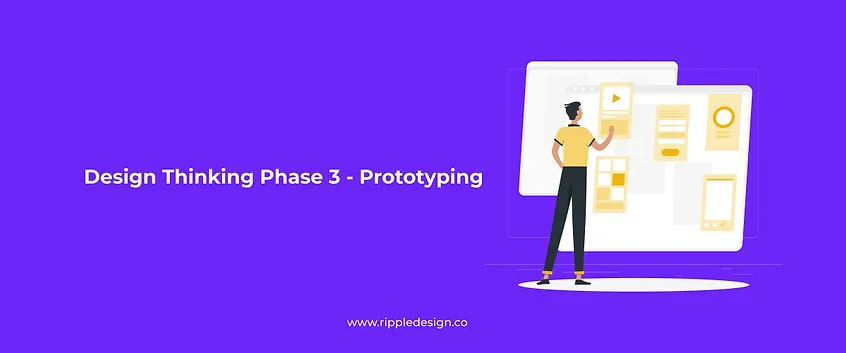
12 Aug 2024
•
5 Min ago
Design Thinking Phase 3 - Prototyping
Design thinking is a human centered, non linear iterative process that helps us understand our users or customers needs better, and...
Sunny Haladker


12 Aug 2024
•
5 Min ago
Testing in Design Thinking
The five stages of Design Thinking — Empathize, Define, Ideate, Prototype and Test — are not meant to be sequential steps to be taken as...
Sunny Haladker


12 Aug 2024
•
5 Min ago
10 types of prototypes
In the prototyping stage of design thinking, we try to explore the problem we have identified and ideated on. We create a sample to test...
Sunny Haladker


12 Aug 2024
•
5 Min ago
Design Thinking Phase 3 - Prototyping
Design thinking is a human centered, non linear iterative process that helps us understand our users or customers needs better, and...
Sunny Haladker




12 Aug 2024
•
5 Min ago
Testing in Design Thinking
Testing in Design Thinking
The five stages of Design Thinking — Empathize, Define, Ideate, Prototype and Test — are not meant to be sequential steps to be taken as...
Sunny Haladker




12 Aug 2024
•
5 Min ago
10 types of prototypes
10 types of prototypes
In the prototyping stage of design thinking, we try to explore the problem we have identified and ideated on. We create a sample to test...
Sunny Haladker




12 Aug 2024
•
5 Min ago
Design Thinking Phase 3 - Prototyping
Design Thinking Phase 3 - Prototyping
Design thinking is a human centered, non linear iterative process that helps us understand our users or customers needs better, and...
Sunny Haladker


12 Aug 2024
•
5 Min ago
Testing in Design Thinking
The five stages of Design Thinking — Empathize, Define, Ideate, Prototype and Test — are not meant to be sequential steps to be taken as...
Sunny Haladker


12 Aug 2024
•
5 Min ago
10 types of prototypes
In the prototyping stage of design thinking, we try to explore the problem we have identified and ideated on. We create a sample to test...
Sunny Haladker


12 Aug 2024
•
5 Min ago
Design Thinking Phase 3 - Prototyping
Design thinking is a human centered, non linear iterative process that helps us understand our users or customers needs better, and...
Sunny Haladker
More Blogs




12 Aug 2024
•
5 Min ago
Testing in Design Thinking
The five stages of Design Thinking — Empathize, Define, Ideate, Prototype and Test — are not meant to be sequential steps to be taken as...
Sunny Haladker




12 Aug 2024
•
5 Min ago
10 types of prototypes
In the prototyping stage of design thinking, we try to explore the problem we have identified and ideated on. We create a sample to test...
Sunny Haladker




12 Aug 2024
•
5 Min ago
Design Thinking Phase 3 - Prototyping
Design thinking is a human centered, non linear iterative process that helps us understand our users or customers needs better, and...
Sunny Haladker